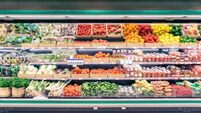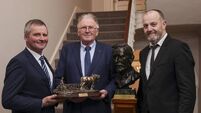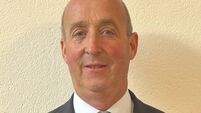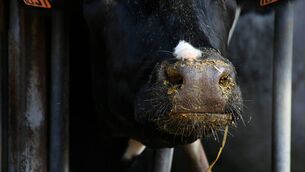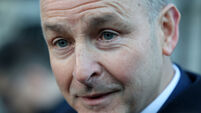Measures for sustainability will become clearer in 2019

The Climate Change Advisory Council will spend the next six months considering the economic effects on agriculture of measures needed to move the sector onto a sustainable path of dealing with climate change challenges.
Farmers will also learn more about the path to sustainability in August, 2019, when the Intergovernmental Panel on Climate Change, will advise on land use measures.
Future policies in Ireland are likely to include more forestry and growing more biomass to generate energy, said Climate Change Advisory Council chair John FitzGerald at last week’s Joint Committee on Climate Action debate.
The task of the council is to provide independent advice on policy. Mr FitzGerald said it is critical to assess how Ireland can best meet the climate change challenge at least cost.
He said Ireland, like Britain, also needs to look at sucking carbon dioxide out of the atmosphere through changes in land use. “We have to get rid of all carbon dioxide. The same goes for nitrogen oxide, NOx, which presents a big issue with agriculture’s use of fertiliser. We must eliminate it also.
“Agriculture has to make a major transformation if Ireland is to decarbonise. The first problem is that we need to define the objective for 2050 and what carbon neutrality means for agriculture.
“In the case of carbon dioxide, it is easy to define. A tonne of carbon dioxide remains in the atmosphere for 100,000 years or indefinitely. It continues to do damage, not just when it is emitted and not just for 12 years; it remains for 100,000 years.”
However, he said, methane, the greenhouse gas emitted by livestock, lasts only 12 years in the atmosphere. “This means that agriculture needs a more nuanced solution.”
“Farmers make money from dairy farming. Dairy cows are a priority. Research shows that farmers make pretty much nothing, net, from beef cattle. While beef cattle and dairy cows are biologically linked, if we de-emphasise beef, and got out of beef production, Ireland would save on the methane emissions, which might give more scope.
“It might be possible, although the advisory council has not decided on the issues, that the price of a particularly damaging fertiliser might be made more expensive. There are solutions that leave agriculture productive and farmers earning an income and that could be consistent with a sustainable future, but we need to define the path.”
“How can we make it profitable or attractive for the owners of the land to change its use in a way that is consistent with climate change?
“Agriculture will have to make major changes but given that milk seems to be most profitable for farmers, can we find a model which is consistent with decarbonising Ireland, which leaves farmers doing what is profitable, we have seen a substantial increase in milk production, but which makes other changes which will offset that in areas in which farmers are not making much money?
“There may be a model out of which farmers will do reasonably well and out of which climate will do very well. I do not have the plan but it is hoped that the Department of Agriculture, Food and the Marine will come up with it.
Mr Fitzgerald said the Climate Change Advisory Council is unanimous that “if we do not raise the carbon tax, we will go nowhere.”
“Carbon pricing alone will not deliver the necessary emissions reductions, but delivering emissions reductions without a sufficient carbon price will be almost impossible and certainly far more expensive.”
His Council colleague, Laura Burke, director general of the Environmental Protection Agency, said anaerobic digestion provides opportunities for win-win situations regarding agricultural and other waste and energy generation. She confirmed livestock emissions are lower in priorities. “Regarding agriculture, methane is different from carbon dioxide in that methane disappears after 12 years but carbon dioxide remains forever.”
“If we make a mistake, and emit too much carbon dioxide today, getting that back would be very difficult. In methane, it is easier, because one makes a change in the future.”
She said emissions from agriculture in Ireland are 2.4% below what they were in 1990.
“What we are seeing is that the fluctuations in agriculture emissions are underpinned by higher animal numbers.”



